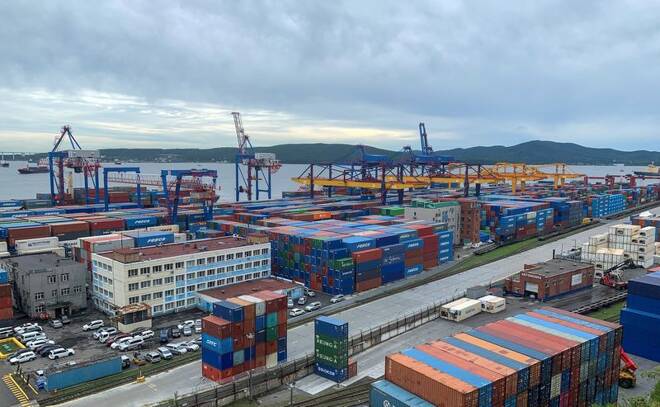Advertisement
Advertisement
Russia’s more gradual economic contraction to extend into 2023: Reuters Poll
By:
By Alexander Marrow MOSCOW (Reuters) - Russia's economy is set to shrink by 2.5% next year, on top of a 3% contraction in 2022, a Reuters poll suggested on Friday, with stubbornly high inflation giving the central bank only limited room to cut interest rates.
By Alexander Marrow
MOSCOW (Reuters) – Russia’s economy is set to shrink by 2.5% next year, on top of a 3% contraction in 2022, a Reuters poll suggested on Friday, with stubbornly high inflation giving the central bank only limited room to cut interest rates.
Russia’s economic landscape changed drastically after Moscow sent tens of thousands of troops into Ukraine on Feb. 24, triggering sweeping Western restrictions on its energy and financial sectors, including a partial freeze of Russian reserves, and leading scores of companies to exit the market.
After initially dire predictions of a double-digit GDP slump, analysts and officials have gradually been improving forecasts as the Russian economy demonstrates better-than-anticipated resilience.
The average forecast among 15 analysts polled in early December suggested the Russian economy was on track to shrink by 3.0% this year, close to the economy ministry’s expectation of a 2.9% drop. A similar poll in early November had predicted a contraction of 3.5%.
But the decline will continue at a similar pace in 2023, with analysts now forecasting a 2.5% drop. Over time, economists have acknowledged that the contraction is likely to be less sudden, but more prolonged than first expected.
Iran’s experience shows that sanctions work gradually, Alfa Bank’s chief economist Natalia Orlova said at conference in Moscow on Friday, and can trigger economic activity in the first six months as the economy adjusts.
“The downturn is not as big as we all thought at first, but this does not mean that we can go into next year peacefully,” Orlova said. “We cannot rule out a deeper contraction next year when compared with 2022, it could be 5-6%.”
Rate cuts to return
In February, the Bank of Russia hiked its key rate to 20% from 9.5% in order to mitigate risks to financial stability, before beginning a series of rate cuts to the current 7.5% level.
After a rate hold on Dec. 16, the bank will continue easing monetary policy in 2023, the poll suggested, with the key rate set to end next year at 6.75%.
The rouble is expected to trade at 74.00 against the dollar a year from now, according to the poll, compared with a rate of 77.50 predicted by analysts in early November. Friday’s official rate was at 61.15 roubles per dollar.
“The key story for the Russian rouble in the coming months could be the launch of the EU’s oil embargo mechanism from Dec. 5 and the imposition of a price ceiling on Russian oil,” said Mikhail Poddubsky, asset manager at MKB Investments.
But Poddubsky said that although he expects a moderate decline in physical oil exports, capital controls and Russia’s strong current account surplus mean the impact on the rouble may be insignificant.
Inflation, one of the key concerns among Russian households, is expected to accelerate to 12.1%, from 8.4% in 2021, according to the poll. Russia targets inflation at 4%.
(Reporting by Alexander Marrow; additional reporting by Elena Fabrichnaya and Darya Korsunskaya; Editing by Louise Heavens)
About the Author
Reuterscontributor
Reuters, the news and media division of Thomson Reuters, is the world’s largest international multimedia news provider reaching more than one billion people every day. Reuters provides trusted business, financial, national, and international news to professionals via Thomson Reuters desktops, the world's media organizations, and directly to consumers at Reuters.com and via Reuters TV. Learn more about Thomson Reuters products:
Did you find this article useful?
Latest news and analysis
Advertisement
